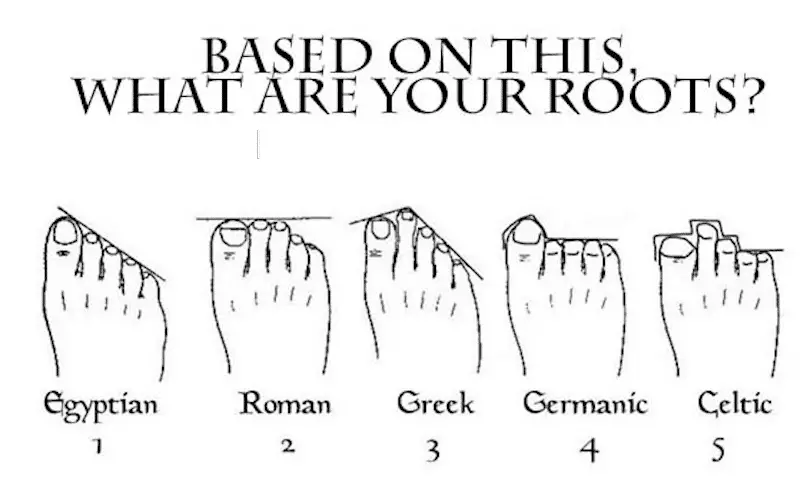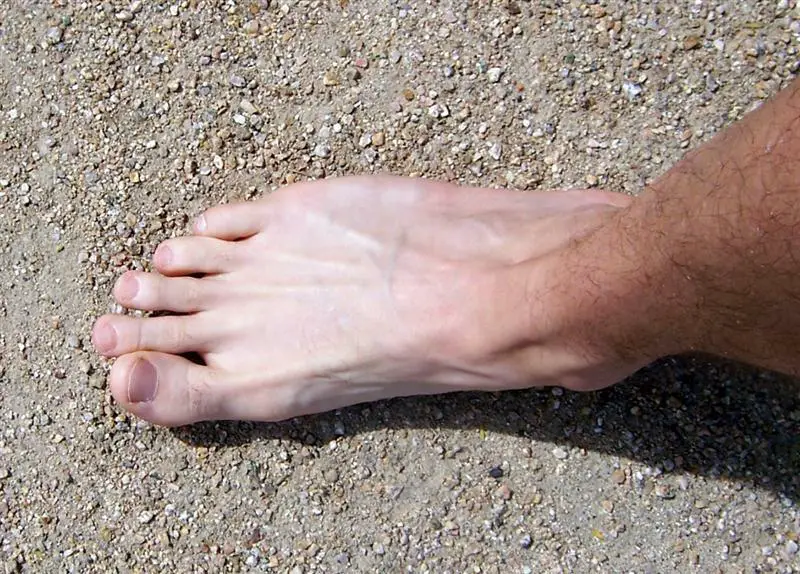Table of Contents
Second Toe Longer Than Big Toe- Does It Require Treatment?
Is your second toe longer than the big toe? If yes, do not freak out after realizing it. The condition in which people find the second toe longer than the big toe is known as Morton’s toe, or simply Morton’s feet. It is widespread. Some people have a long second toe while others don’t.
In a few people, the second toe longer than the big toe leads to the formation of calluses on the sole of their foot which causes pain with other conditions.
In this article, you will have a closer look at what Morton’s toe is. Let’s find out.
Is your second toe longer than the big toe?
You can quickly tell if someone has Morton’s toe by looking at their feet. It does not require a particular diagnosis to find out if someone has Morton’s foot or not. Just look at your feet. If you find the second toe longer than the big toe, you have Morton’s foot or toe.
This condition is prevalent. A study involving students of American colleges revealed that nearly 42.2% of students have the second toe longer than the big toe. Among these students, 45.7% were men, while 40.3% were female.
This condition is hereditary, which suggests it passes on from one generation to another, similar to most bone structure features.
Research has revealed that Morton’s toe might serve as an advantage in athletes. A study from the year 2004 compared athletes to non-athletes. The study showed that professional athletes had Morton’s toe more commonly compared to non-athletes.
Also, for those wondering how the bone structure looks like when the second toe is longer than the big toe, take a look:

Your metatarsals are the bones that join your toes to the back of the foot. They generally curve upward to create the arch of the foot. The first metatarsal bone is the thickest of all. In people with a second toe longer than the big toe, the first metatarsal is slightly shorter than the second. This condition is what makes the second toe longer than the big toe or first toe.
When the first metatarsal is shorter than the second metatarsal, it may cause greater weight onto the more delicate second metatarsal bone.
Origin of the name
The name comes from the American orthopedist named Dudley Joy Morton. In a book from 1935, Morton explained a condition known as Morton’s foot syndrome or Morton’s triad that affected everyone having a second toe longer than the big toe.
He assumed that this syndrome led the second toe to bear an excess pressure and weight that the more significant first toe would have generally carried. That might have led to the formation of calluses on the second as well as the third toes.
Pain With Morton’s Toe

Considering Morton’s toe is linked to the structure of your foot, a few people who have a second toe longer than the big toe ultimately get pain and aches in the foot. It is usually connected with how pressure is scattered across the foot, particularly on the first and second metatarsal bones.
You might sense discomfort and tenderness at the bottom of the first two metatarsal bones closer to the arch and at the beginning of the second metatarsal closer to the second toe.
Due to such pain or ache, you can find a lot of treatment options for your condition. Keep reading to find a suitable treatment plan.
Treatment for Morton’s toe
The doctors will initially try installing a soft, flexible pad beneath the big toe and first metatarsal bone. The goal of this pad is to raise the bearing of weight on the more big toe and where it links to the first metatarsal bone.
Some conservative treatment options include:
- Exercises and workouts- Physical treatment or therapy will stretch and strengthen the muscles present in the foot.
- Specific Medication- Over-the-counter medications to relieve pain, such as naproxen or Aleve and ibuprofen or Advil, might help decrease pain and inflammation. The doctors might also recommend some prescription-strength medicines that are anti-inflammatory to reduce swelling.
- Customized shoe accessories- Custom orthotics made by a professional might help adjust and align your foot and relieve the pain.
If discomfort and pains persist, the doctors might suggest undergoing surgery. There are two popular types of surgical methods for this condition:
- Joint resection- A tiny part of one of the toe bones that joins the bones is removed. The scientific term for this is known as interphalangeal joint arthroplasty.
- Arthrodesis- A complete joint of the toe is taken out, and the bone edges are permitted to heal and join again to form the joints. The scientific term for this condition is called interphalangeal joint arthrodesis.
How to take care of your feet
A few simple deeds you can begin from now to take care of the feet and avoid pain are stated below:
- Try wearing comfortable and suitable well-fitting footwear that provides good support.
- Purchase shoes that have a comprehensive, roomy box for keeping the toes comfortable. Prevent buying shoes that have pointed toes.
- Attach an insole with curve support and comfort to the shoes.
- Try padding “hot spots,” points in the shoes where it may rub and cause pain, or is not padded adequately.
- Take routine care of calluses on the toes. While calluses are not significantly critical because they appear to guard our feet from repeated stress, keeping the callus from becoming too thick or dry is essential.
Difference between Morton’s toe and Morton’s neuroma
Morton’s toe is not the same as Morton’s neuroma, also known as Morton’s metatarsalgia. Both the conditions are named after two Mortons.
Morton’s neuroma name came from the famous American physician named Thomas George Morton, while the condition Morton’s toe came from Dudley Joy Morton’s name.
Morton’s neuroma is a severe condition that affects the ball of your foot and causes immense pain. It is reported frequently between the third and fourth toes, but sometimes it may also come in between the second and third toes. The discomfort usually comes from the thickening of the muscle around the nerve.
Morton’s toe and other foot conditions

You have seen how Morton’s one is different from Morton’s neuroma. Let’s examine how this condition is different than other conditions in your foot. There is other foot pain that may be associated with Morton’s toe:
- If the longer second toe brushes against the head of shoes, it may lead to an ear of corn or callus on the edge of the toe.
- Rubbing after wearing a tight shoe can also lead to Morton’s toe developing into a hammertoe condition when the more significant toe bends inward and grows effectively more compressed. As the tip of your toe touches against the shoe, the toe muscle can compress and form a hammertoe.
- A Morton’s foot arrangement might make it highly likely for the toes to grow red, swollen, or warm as they are compressed after wearing a shoe.
- A bunion on the first toe may move the big toe, making it appear as if you have a second toe longer than the big toe.
Variations in lengths and shapes of the foot have been recognized over a long period. Data of different foot structures are discovered in fossilized footprints and ancient sculptures. Morton’s toe is simply one type in a wide variety of foot shapes.
Is it common to have a second toe longer than the big toe?

The percentage of Morton’s toe condition varies considerably among distinctive population groups. Among the Ainu people from far eastern Japan and Russia, 90 percent of the population shows Morton’s toe condition in the foot.
In a few Greek studies, 32 percent of women and 62 percent of men had Morton’s toe condition.
A British podiatrist who grew to become an amateur archeologist discovered that the skeletal remains of Celtic people were highly likely to have Morton’s toe condition. In contrast, those of Anglo-Saxon origin often had their second toe somewhat shorter than their first toe.
The Bottom Line
Do not panic or get tensed if someone points out or sees your second toe longer than the big toe. Morton’s toe is not a disorder that doctors should treat but a healthy and natural foot shape where the second toe appears more extended than the first toe.
It might cause pain or discomfort in a few people. In particularly severe cases, a toe shortening surgery might be suggested by the doctors. Typically, traditional treatments will resolve the pain. Sometimes strategy to reduce pain is as simple as arranging a comfortable pair of shoes. If not, foot experts hold a wide variety of specific treatment options for every condition that requires treatment.

